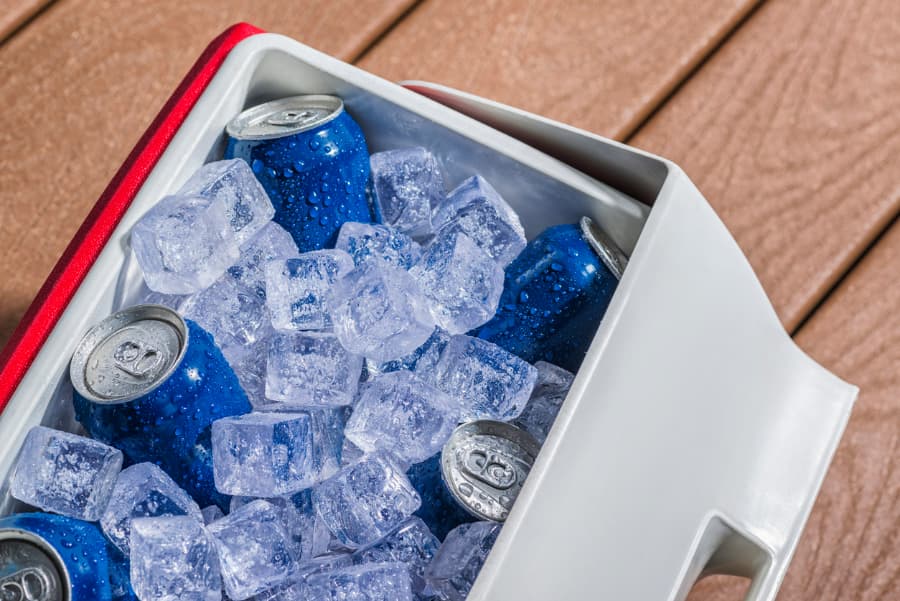
Consumers have several common questions when it comes to alcoholic beverages: What is IBU in beer, and what does ABV mean? International bitterness units (IBUs) and alcohol by volume (ABV) are two types of measurements commonly used to classify beers. IBUs and ABV are important to know, as they can help consumers determine what to expect from the beer’s flavor, mouthfeel, and potency.
Here, Columbia Distributing, which serves businesses in Oregon and Washington as a premier beverage distributor, explains the difference between IBU and ABV.
International Bitterness Units (IBUs)
Sometimes referred to as international bittering units, IBUs are units on a scale that measure a beer’s bitterness level. The IBU scale is an accurate way to help consumers determine whether the beer is within their taste preferences. Isohumulone, polyphenols, oxidized and isomerized alpha acids, and other bittering compounds are often found in beer. In other words, IBUs are essentially measuring the parts per million of concentrated bittering compounds.
IBU ranges for popular beer styles include:
- 5-10 IBUs: American lagers
- 10-20 IBUs: Light lagers
- 10-15 IBUs: Wheat beer, Hefeweizen
- 15-30 IBUs: Blonde ales, amber ales, Belgian Tripels, pilsners, porters
- 30-70 IBUs: American pale ales, amber ales, India pale ales (IPAs), hazy IPAs, double IPAs, imperial stouts, Belgian Tripels, pilsners, porters
- 70-100 IBUs: Double IPAs, imperial stouts
The IBU scale should be considered a general guideline when scoping the bitterness of a beer. This is because malt, flavorings, and other ingredients, which are not measured by IBUs, can mask the actual bitter taste in high-IBU options.
Alcohol by Volume (ABV)
ABV’s meaning is simply a measurement of the ounces of alcohol content in a drink. It is required that every alcoholic beverage show the ABV percentage on the label. For instance, if a 12-oz. beer bottle label displays 5.0% ABV, this means 0.6 oz. of pure alcohol is present. While beers usually contain 3.0%-13.0% ABV, most fall between 4.0%-7.0% ABV. You may also hear the term high-point beer, which refers to any brew that is over 4.0% ABV.
Many associate ABV with knowing how much alcohol is being consumed per blood alcohol legal limits. However, ABV can also impact the taste of the beer. Through a process called fermentation, beer makers use yeast to convert the sugars from grains, such as wheat or malted barley, into alcohol and carbon dioxide. Brews with lower ABVs are usually light in taste and less potent, while beers with higher ABVs can have a more noticeable alcohol presence and more intense flavors.
Do IBUs and ABV Affect Each Other?
ABV and IBUs have no direct correlation – one simply measures the total alcohol content, while the other dictates how bitter a beer is. However, as noted previously, beers with higher IBUs often contain other ingredients to balance out the bitterness. For example, malts add sugar content to reduce the bitter taste, but this can also increase the alcohol level. To best determine the beer’s overall taste profile, consumers should consider both ABV and IBUs when making a decision – not one or the other.
Help Consumers Navigate Their Options with Columbia Distributing
Whether consumers already have their favorite brands or are seeking new options, all establishments selling beer should be able to answer these questions: What does ABV mean, and what is IBU in beer? Columbia Distributing offers something for virtually everyone, from brews with higher ABV and IBUs to low-alcohol beers with little to no bitterness. For more information about the products we offer and our shipping capabilities throughout WA and OR, contact us today.